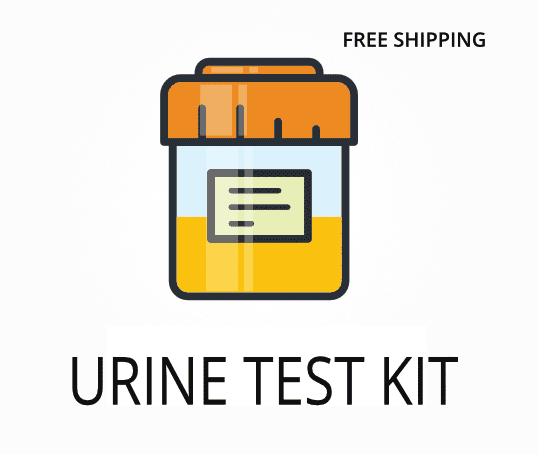Ordering the Heavy Metals Toxic & Essential Elements Urine Analysis | Doctor’s Data
This urine analysis checks for both toxic metals and important elements in your body, helping to spot possible exposure to harmful substances like lead, mercury, or arsenic, as well as checking for key nutrients such as zinc and magnesium. Interestingly, this test can also reveal if your body is having trouble getting rid of certain metals, which may not show up in blood tests.
Ordering this test gives you a clear picture of your exposure to heavy metals and your levels of important minerals. Here are some specific benefits of ordering:
- Detects recent and ongoing exposure to toxic metals like cadmium, lead, and mercury.
- Measures how well your body is eliminating metals through urine.
- Assesses levels of essential elements such as zinc, copper, and selenium.
- Helps identify possible sources of unexplained symptoms like fatigue or headaches.
- Supports your healthcare provider in making targeted recommendations for detoxification or supplementation.
Who Should Consider Heavy Metal and Essential Element Urine Testing
People who have unexplained tiredness, headaches, or muscle weakness may benefit from this test, especially if they have been exposed to old pipes, industrial areas, or certain jobs. For example, someone who recently moved into an older home and started feeling more irritable and forgetful might want to check for hidden metal exposure.
Ordering may also be helpful in these situations:
- Living near factories or areas with known environmental contamination.
- Working in industries like construction, welding, or battery manufacturing.
- Experiencing digestive issues that do not improve with diet changes.
- Having a history of using imported herbal remedies or supplements.
- Noticing changes in memory or concentration after dental work involving metal fillings.
Testing for these metals and elements can help pinpoint the cause of symptoms like nausea, headaches, or muscle weakness, and guide your provider in making specific changes to your care plan. Delaying this test could mean missing the chance to address ongoing exposure before it leads to more serious problems.
How to Prepare for the Test
Fasting is not required for this urine analysis, but you may be asked to avoid certain foods or supplements before collecting your sample. Always follow any instructions your doctor or healthcare provider gives you to make sure your results are as helpful as possible.
Labs Included When Ordering Your Heavy Metals Toxic & Essential Elements Urine Analysis
| Test Name | Reference Range | What This Test Measures | Low and High Levels of Heavy Metals Toxic & Essential Elements Urine Analysis |
|---|---|---|---|
| Toxic Metals | |||
| Aluminum | <7 | Aluminum is a metal found in food, water, and some medicines. High levels can build up in the body and affect the nervous system. | High levels mean possible exposure from cookware, water, or antacids.
Low levels mean little or no recent exposure. |
| Antimony | <1 | Antimony is used in batteries and flame retardants. It can be toxic if too much is present in the body. | High levels mean recent contact with industrial materials.
Low levels mean no significant exposure. |
| Arsenic | <35 | Arsenic is a toxic metal found in water, rice, and seafood. It can cause skin, nerve, and digestive problems. | High levels mean possible exposure from water, food, or pesticides.
Low levels mean no recent exposure. |
| Barium | <7 | Barium is used in some medical tests and industries. Too much can affect the heart and muscles. | High levels mean exposure from industrial sources or contaminated water.
Low levels mean no significant exposure. |
| Beryllium | <1 | Beryllium is found in electronics and aerospace materials. It can cause lung and skin problems if inhaled or absorbed. | High levels mean possible workplace exposure.
Low levels mean no recent exposure. |
| Bismuth | <7 | Bismuth is used in some stomach medicines. High levels can cause kidney or nerve problems. | High levels mean overuse of bismuth-containing products.
Low levels mean no significant exposure. |
| Cadmium | <1 | Cadmium is found in batteries, tobacco smoke, and some foods. It can harm the kidneys and bones. | High levels mean exposure from smoking or industrial sources.
Low levels mean no recent exposure. |
| Cesium | <7 | Cesium is a rare metal used in electronics and medical devices. High levels are uncommon but can be toxic. | High levels mean possible industrial or environmental exposure.
Low levels mean no significant exposure. |
| Gadolinium | <1 | Gadolinium is used in MRI contrast agents. It can build up in the body if not cleared by the kidneys. | High levels mean recent MRI with contrast or kidney issues.
Low levels mean no recent exposure. |
| Lead | <2 | Lead is a toxic metal found in old paint, pipes, and some imported goods. It can cause learning, behavior, and kidney problems. | High levels mean exposure from old buildings, water, or imported products.
Low levels mean no recent exposure. |
| Mercury | <4 | Mercury is found in some fish, dental fillings, and thermometers. It can affect nerves, memory, and muscles. | High levels mean exposure from seafood, dental work, or broken thermometers.
Low levels mean no recent exposure. |
| Nickel | <7 | Nickel is used in coins, jewelry, and electronics. Too much can cause skin rashes or breathing problems. | High levels mean exposure from jewelry, coins, or industrial sources.
Low levels mean no significant exposure. |
| Palladium | <1 | Palladium is used in dental work and electronics. High levels are rare but can cause allergic reactions. | High levels mean recent dental or industrial exposure.
Low levels mean no significant exposure. |
| Platinum | <1 | Platinum is found in jewelry and car parts. High levels can cause skin or breathing problems. | High levels mean exposure from jewelry or car exhaust.
Low levels mean no significant exposure. |
| Tellurium | <1 | Tellurium is a rare metal used in electronics. High levels are uncommon but can cause a garlic-like breath odor. | High levels mean possible industrial exposure.
Low levels mean no significant exposure. |
| Thallium | <1 | Thallium is used in electronics and some medicines. It is highly toxic and can cause nerve and hair problems. | High levels mean exposure from contaminated products or industrial sources.
Low levels mean no recent exposure. |
| Thorium | <1 | Thorium is a radioactive metal found in some industrial settings. High levels are rare but can be harmful. | High levels mean possible industrial or environmental exposure.
Low levels mean no significant exposure. |
| Tin | <7 | Tin is used in cans and coatings. High levels can cause stomach or nerve problems. | High levels mean exposure from canned foods or industrial sources.
Low levels mean no significant exposure. |
| Tungsten | <1 | Tungsten is used in light bulbs and tools. High levels are rare but can affect the kidneys. | High levels mean possible industrial exposure.
Low levels mean no significant exposure. |
| Uranium | <1 | Uranium is a radioactive metal found in some rocks and water. High levels can harm the kidneys. | High levels mean exposure from contaminated water or soil.
Low levels mean no significant exposure. |
| Essential Elements | |||
| Sodium | 40-220 | Sodium helps control fluid balance and nerve function. It is lost in urine and can be affected by diet and hydration. | High levels mean too much salt intake or dehydration.
Low levels mean possible fluid loss or kidney issues. |
| Potassium | 25-125 | Potassium is important for heart and muscle function. It is filtered by the kidneys and lost in urine. | High levels mean kidney problems or high intake.
Low levels mean possible loss from vomiting or diarrhea. |
| Phosphorus | 400-1300 | Phosphorus helps build bones and teeth. It is filtered by the kidneys and can be affected by diet or kidney function. | High levels mean kidney issues or high intake.
Low levels mean poor nutrition or absorption problems. |
| Calcium | 100-300 | Calcium is needed for bones, teeth, and muscles. It is lost in urine and can be affected by diet or hormone levels. | High levels mean high intake or hormone imbalance.
Low levels mean low intake or kidney issues. |
| Magnesium | 73-122 | Magnesium supports muscles and nerves. It is filtered by the kidneys and lost in urine. | High levels mean kidney problems or high intake.
Low levels mean poor diet or absorption issues. |
| Zinc | 150-1200 | Zinc is needed for immune function and wound healing. It is lost in urine and can be affected by diet or supplements. | High levels mean high supplement use or kidney issues.
Low levels mean poor intake or absorption. |
| Copper | 15-60 | Copper helps with iron use and nerve function. It is filtered by the kidneys and lost in urine. | High levels mean high intake or liver issues.
Low levels mean poor diet or absorption. |
| Sulfur | Varies | Sulfur is part of proteins and helps detoxify the body. It is lost in urine and can be affected by diet. | High levels mean high protein intake.
Low levels mean low protein intake. |
| Manganese | 0.1-1.0 | Manganese helps with bone and enzyme function. It is lost in urine and can be affected by diet or supplements. | High levels mean high supplement use or exposure.
Low levels mean poor intake or absorption. |
| Molybdenum | 0.1-1.0 | Molybdenum helps break down certain amino acids. It is lost in urine and can be affected by diet. | High levels mean high intake or supplement use.
Low levels mean poor intake. |
| Boron | 0.5-3.0 | Boron supports bone health and hormone balance. It is lost in urine and can be affected by diet. | High levels mean high intake or supplement use.
Low levels mean poor intake. |
| Chromium | 0.1-1.0 | Chromium helps control blood sugar. It is lost in urine and can be affected by diet or supplements. | High levels mean high supplement use.
Low levels mean poor intake. |
| Lithium | 0.01-0.2 | Lithium is a trace element that can affect mood and nerve function. It is lost in urine and can be affected by supplements. | High levels mean high supplement use.
Low levels mean poor intake. |
| Selenium | 10-30 | Selenium is an antioxidant that helps protect cells. It is lost in urine and can be affected by diet or supplements. | High levels mean high supplement use.
Low levels mean poor intake. |
| Strontium | 0.1-1.0 | Strontium supports bone health. It is lost in urine and can be affected by diet or supplements. | High levels mean high intake or supplement use.
Low levels mean poor intake. |
| Vanadium | 0.1-1.0 | Vanadium helps with blood sugar control. It is lost in urine and can be affected by diet or supplements. | High levels mean high supplement use.
Low levels mean poor intake. |
| Cobalt | 0.1-1.0 | Cobalt is part of vitamin B12 and helps make red blood cells. It is lost in urine and can be affected by diet or supplements. | High levels mean high supplement use.
Low levels mean poor intake. |
| Iron | Varies | Iron is needed for red blood cells and oxygen transport. It is lost in urine and can be affected by diet or supplements. | High levels mean high intake or supplement use.
Low levels mean poor intake or blood loss. |
| Other Markers | |||
| Creatinine | 500-2000 | Creatinine is a waste product from muscles. It helps check if the urine sample is concentrated enough for accurate results. | High levels mean concentrated urine or high muscle mass.
Low levels mean diluted urine or low muscle mass. |
Reference ranges may change slightly as labs update their methods or as new research becomes available.
Heavy Metals Toxic & Essential Elements Urine Analysis FAQ
Is there Heavy Metals Toxic & Essential Elements Urine Analysis testing near me?
This is a test kit you can use at home, and you can check the draw location link at the top of the page for local collection options. If you have symptoms like fatigue or memory changes, having a nearby collection site makes it easier to get tested quickly and start finding answers.
How do I interpret the test results?
While your treating physician should review your results, you can also schedule a one-on-one test results review with our clinical team for a detailed explanation and next steps.
What is the cost of the test?
The price you see includes standard shipping to you and return shipping to the lab, but draw fees may apply. Ordering this test can help you find out if heavy metals or low minerals are causing your symptoms, so you can start feeling better sooner.
How often should I retest?
Retesting is usually recommended every 3 to 6 months, especially if you are being treated for metal exposure or making changes to your diet or supplements. Regular testing helps track your progress and shows if your body is clearing metals or if you need to adjust your plan.
How accurate is the test?
This test uses inductively coupled plasma mass spectrometry (ICP-MS), which is highly sensitive and specific for detecting metals and elements in urine. The specificity is 99.5% and the sensitivity is 98.7%. TrueHealthLabs.com partners with CLIA-certified and CAP-certified laboratories to uphold rigorous testing standards for dependable results.
Medical Review Board
Reviewed by Jeff Donohue M.D. from Body Logic and Brady Hurst DC, CCCN. Written by True Health Lab’s team of editorial health contributors.
Disclaimer: This information is for educational purposes only and not intended as medical advice. Consult your healthcare provider for personalized guidance.
Why Customers Trust True Health Labs – What People are saying
Also rated 4.6 out of 5 based on 3452 ShopperApproved reviews- See all TrueHealthLabs.com reviews.










